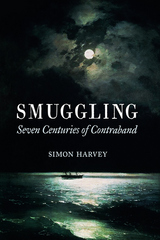
Long before the concept of “globalization,” the Portuguese constructed a vast empire that extended into Africa, India, Brazil, and mid-Atlantic territories, as well as parts of China, Southeast Asia, and Japan. Using this empire as its starting point and spanning seven centuries and four continents, The Portuguese-Speaking Diaspora examines literary and artistic works about the ensuing diaspora, or the dispersion of people within the Portuguese-speaking world, resulting from colonization, the slave trade, adventure seeking, religious conversion, political exile, forced labor, war, economic migration, and tourism.
Based on a broad array of written and visual materials, including historiography, letters, memoirs, plays, poetry, fiction, cartographic imagery, paintings, photographs, and films, The Portuguese-Speaking Diaspora is the first detailed analysis of the different and sometimes conflicting cultural productions of the imperial diaspora in its heyday and an important context for understanding the more complex and broader-based culture of population travel and displacement from the former colonies to present-day “homelands.” The topics that Darlene J. Sadlier discusses include exploration and settlement by the Portuguese in different parts of the empire; the Black Atlantic slave trade; nineteenth-century travel and Orientalist imaginings; the colonial wars; and the return of populations to Portugal following African independence. A wide-ranging study of the art and literature of these and other diasporic movements, this book is a major contribution to the growing field of Lusophone studies.

Harvey tells this story by focusing on the most coveted contrabands of their time. In the Age of Discovery, these were silk, spices, and silver. During the days of western empires, they were gold, opium, tea, and rubber. And in modern times it has been, of course, drugs. To the side of these major commodities, he looks at a wide array of things that have always been in smugglers’ trunks, from guns to art to—the most dangerous of all—ideas. Central to this story are the (not always) legitimate forces of the Dutch and British East India Companies, the luminaries of the Spanish Empire, Napoleon Bonaparte, the Nazis, Soviet trophy brigades, and the CIA, all of whom have made smuggling, at one point or another, part of their modus operandi. Beneath this, Harvey traces out the smaller-time smugglers, the micro-economies of everyday goods, precious objects, and people, drawing the whole story together into a map of a subterranean world crisscrossed by smugglers’ paths.
All told, this is the story of the unrelenting drive of markets to subvert the law, of the invisible seams that have sewn the globe together.
READERS
Browse our collection.
PUBLISHERS
See BiblioVault's publisher services.
STUDENT SERVICES
Files for college accessibility offices.
UChicago Accessibility Resources
home | accessibility | search | about | contact us
BiblioVault ® 2001 - 2024
The University of Chicago Press









